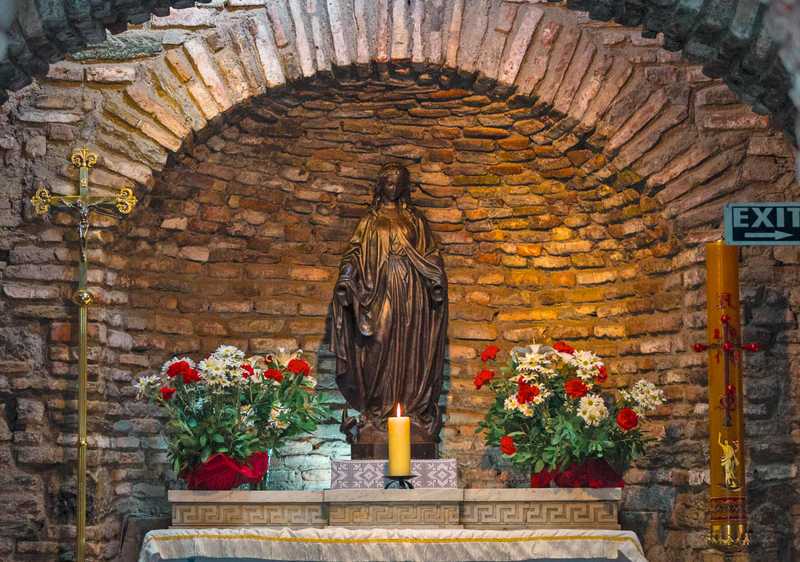From the Magnesia Gate the road climbs to the south, arriving after 8 kilometers at the House of the Virgin Mary. Believed to be where the mother of Jesus spent her last years, the house sits in a forest on Mt Bülbül at an altitude of 358 meters above sea level.
Christian historians contend that in his dying moments, Jesus entrusted his mother to the care of his friend and apostle, John. Following the crucifixion, St John duly rescued Mary from the perilous crimes of Jerusalem and brought her to Ephesus. Here he moved her into a cabin on the lower slopes of Mt Bülbül, a safe distance from the pagan city center, and took care of her. Upon the Virgin’s death, purportedly at the age of 101, her body was buried by John at a secret location on Mt Bülbül. As Christianity began to spread, a church was built at the site of the cabin. As it stands today, the House of the Virgin Mary could be described as a modest, cruciform chapel with a small narthex. The statue seen in the apse was a later addition. In front of the apse is a heart of black marble, while the room to the right is where the Virgin is believed to have slept.
The present building is dated to the eleven century; however , the earliest construction phase probably goes back to the first century AD, with extensive renovation in the eleventh century giving the shrine its present-day appearance, notwithstanding later restoration. Significantly, the house is also considered sacred by the Muslim world.
Early in the ninetieth century, the invalid German nun, Sister Catherine Emmerich (1774-1824), allegedly had a vision in which the location of the House of the Virgin Mary was revealed to her. Moved by the accounts of the vision, two Lazarist priests from Izmir set out in 1891 and discovered the ruins of a building, as discovered by Emmerich, along with a spring. After marking out a trail to the site of the ruins, they began organizing annual pilgrimages. A year later, in 1892, the House of the Virgin was declared a place of pilgrimage by the Archbishop Timoni of Izmir. The Vatican, too, has since recognized the house as one of the world’s most sacred buildings.
A bronze statue of the Virgin uncovered in on-site excavations is now displayed at the chapel entrance with its dismembered arm reinstated. Today, the modest shrine attracts thousands of pilgrims and visitors of different faiths from all over the world. Even papal visits have been known, the first made in 1967, by Paul VI, the second by John Paul II in 1979 and the third by Pope Benedict XVI in 2006. Another popular event at the site is the services held every year on August 15th, to celebrate the Assumption of the Virgin Mary.

